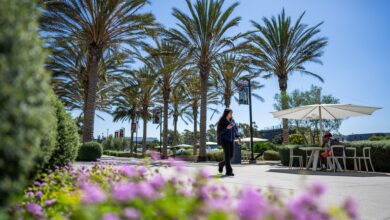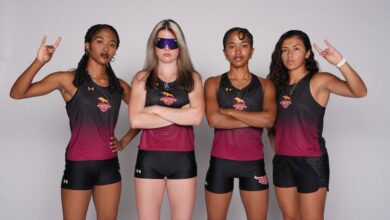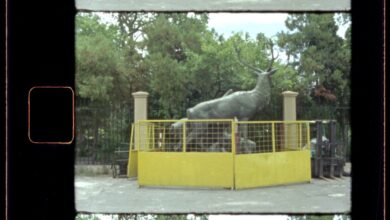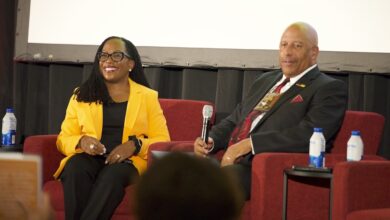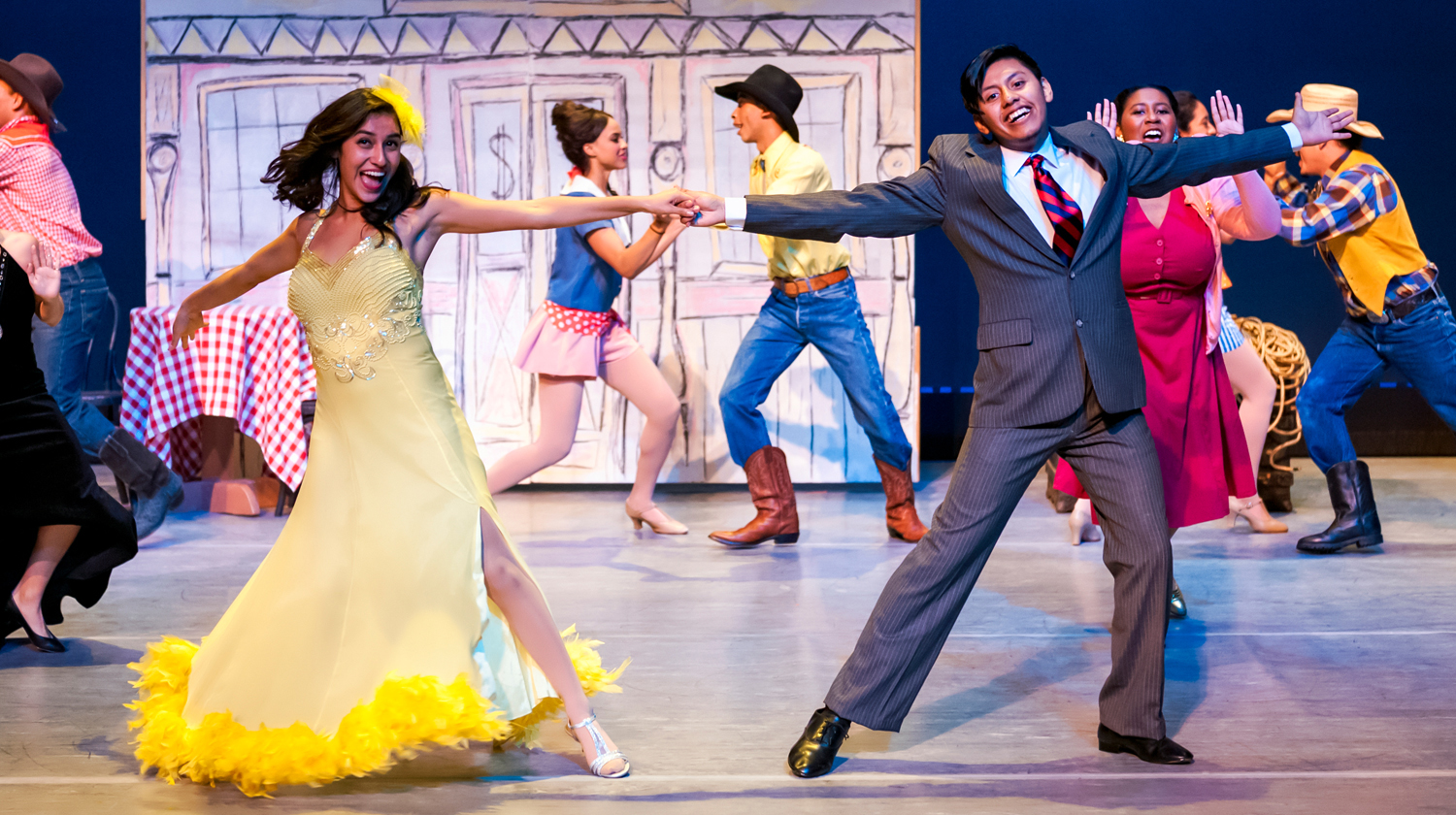
High-speed aerial photography is not something that CSUDH alumnus Jim Ross ever saw himself getting into. “Aerial photography was right in line with exotic dancing as jobs I never thought I would have in my lifetime,” he laughs.
But despite some hiccups (so to speak) regarding motion sickness, Ross has now been shooting spectacular pictures of aircraft and other NASA projects for almost 35 years. He currently serves as the photo lead at NASA’s Armstrong Flight Research Center in Edwards, Calif. His work was recognized in April 2024, when his picture of research pilot Nils Larson making aerobatic maneuvers was named NASA Photo of the Year.
Born and raised in Bozeman, Montana, Ross developed an interest in photography at a young age. His grandfather was a photographer himself and gave Jim a small box camera when he was just seven years old. Ross’ father was a football coach at Montana State University, and as a child Jim started taking pictures from the sidelines.
He found himself drawn to sports photography, and continued shooting mostly sports while earning his bachelor’s degree in photography from Montana State.
“When I graduated from college, there weren’t a lot of options for photography in Montana,” says Ross. “I sat down with my father and we talked about where I should move. We felt like Los Angeles would be a good fit, so I moved down there. I had some family in the area, so I stayed with them and looked for work.”
Ross landed a job at a Hollywood photo lab, where he worked for almost two years – until an ad in the Los Angeles Times caught his eye in 1989. “NASA ran a Help Wanted ad for a photographer,” recalls Ross. “They had a phone number to call get prescreened. If they liked you, they had you come out and interview. My strong background in in lab work and printing impressed them, because they needed that more than they actually needed the photography.”

He thought that his first attempt at aerial photography might be his last. During an hour-long test flight, Ross got ill from motion sickness four times. He thought that probably meant he wasn’t cut out for the job, but the flight test engineer training him was unfazed.
“She asked me how many times I got sick, and I told her four,” says Ross. “Then she asked how long it took me to recover each time. I told her about a minute. She said that meant in an hour-long flight, I still had 56 good minutes to take photos!”
Ross landed the job on the photography staff, becoming photo lead in 1997. In almost 35 years of flying, he has flown on more than 920 missions and has logged about 1,100 flight hours.
In 2001, while working for NASA, Ross decided to return to school to earn his master’s degree. He found CSUDH’s HUX online master’s program to be the best fit for him. “There weren’t a lot of options at that time for remote work, and CSUDH was one of the best that I found,” says Ross. “I went through that program and got my master’s in Humanities.”
The bulk of Ross’ job involves scientific and industrial photography. When NASA or the Air Force modifies or changes an airplane, they require documentation of every small detail. Ross takes hundreds of photos of aircraft before, during, and after test flights, information that is vital to the engineers and designers building them.
Of all the assignments he’s had over his three decades in the air, Ross says one stands out as his favorite. “In 2012, when they flew the Space Shuttle Endeavor to LAX, I got to accompany them and take photos as it flew all over the L.A. area. That was really challenging and cool, flying low over Los Angeles in that way.”
Ross flew in an F-18 jet alongside the airliner carrying the shuttle. He shot the Endeavor with over 30 Southern California landmarks in the background – from the Hollywood sign to Disneyland. Timing was everything, says Ross, because the shuttle was only scheduled to fly past each landmark once. “We were there and then we were gone,” he remembers.
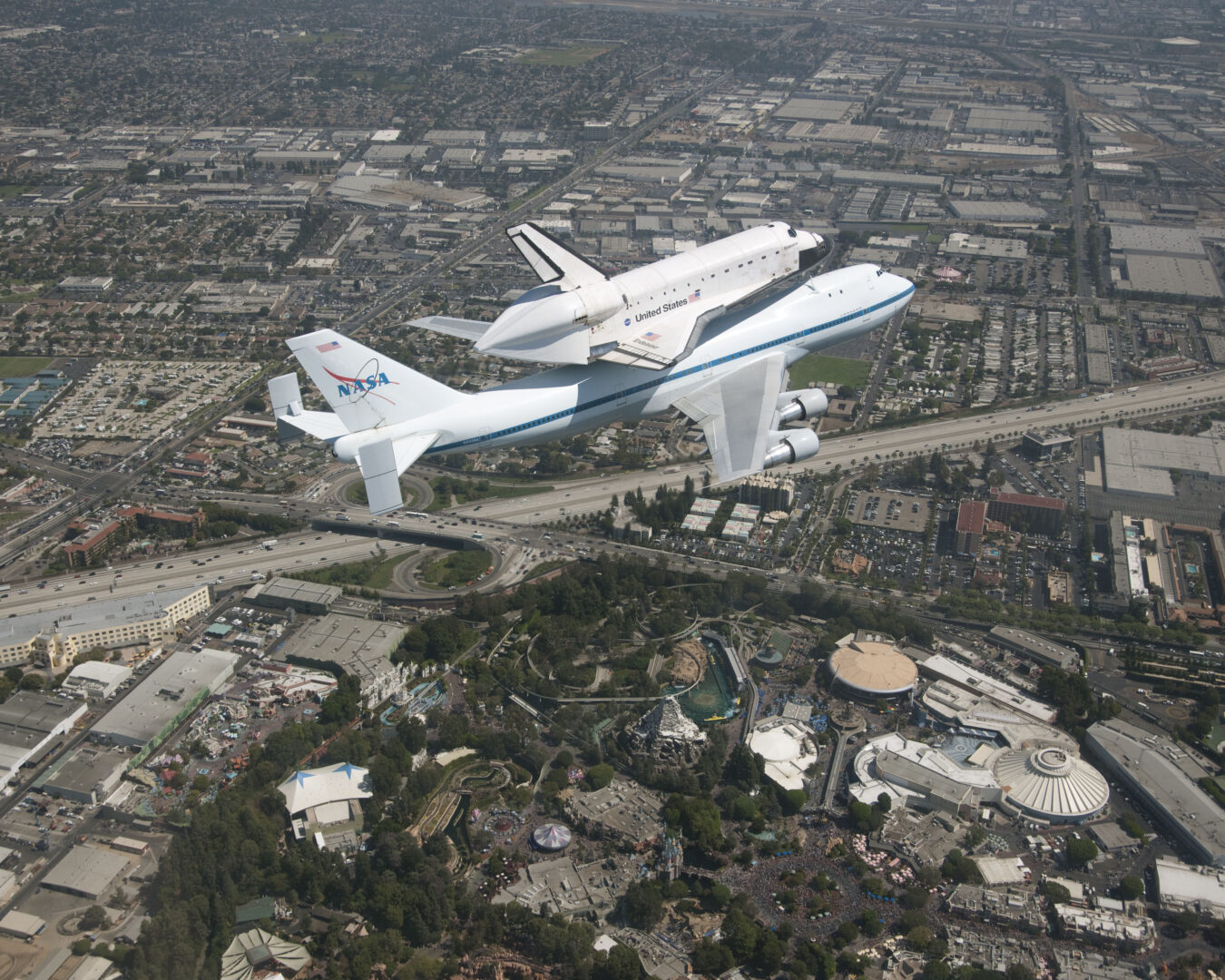
His award-winning photo was actually taken on his cell phone. Ross sat in the back seat of the plane as the pilot put it through its paces with a series of maneuvers. “When we were going into a barrel roll, I held my phone as far behind me as I could and triggered it from the side. I just kept trying it until I finally had the image I was looking for.”
Ross has previously been recognized for his work with NASA’s Public Service Medal and the Exceptional Public Achievement Medal. Ross also won the Best of the Best award at the 2001 Aviation Week & Space Technology photo contest. His work has appeared in many publications, including Aviation Week & Space Technology, National Geographic, and Air & Space Smithsonian.
His advice for young photographers actually applies to those starting out in any profession, he says. “I never thought that I could do aerial photography. But if you want it bad enough and you try hard enough and work hard enough, you can do anything you want to do. You just have to put your mind to it.”
“NASA Photo One,” a book highlighting 100 of Jim Ross’ most memorable photos, can be found at https://www.nasa.gov/wp-content/uploads/2023/03/sp-4553.pdf.
A video documenting Jim Ross’ career in aerial photography can be viewed at https://youtu.be/4dMB6_NQfXQ.


